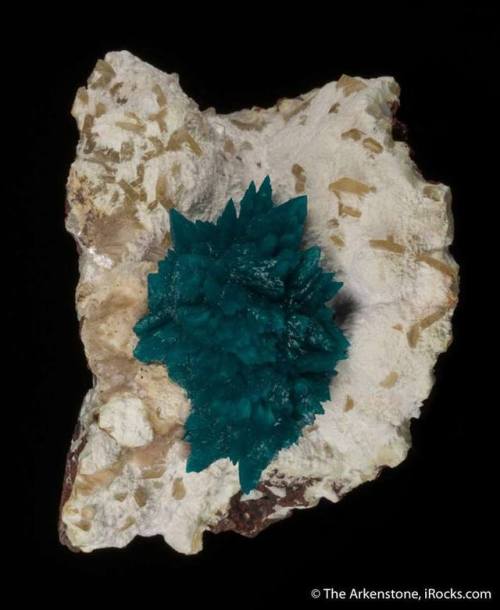Cavansite These stunning greens are deposited in cavities within basaltic and andesitic lavas after
Cavansite These stunning greens are deposited in cavities within basaltic and andesitic lavas after they crystallise in the vesicles (frozen gas bubbles) as they fill with crystals when mineralised waters later circulate through the rock as part of the hydrothermal systems typically associated with vulcanism. Named after its constituent elements, calcium vanadium silicate, it was first discovered in Oregon in the 1960’s, but is most commonly found in India in the Deccan trapps, that vast region repeatedly covered by pulses of basaltic magma during the late Cretaceous to a depth of several km. It is a rare mineral, and too soft for jewellery use (at 3.5 on Mohs scale) and also possesses easy cleavage (a tendency to split along planes of weakness in the crystal structure where there are fewer bonds holding it together). Electric blues are another common colour and was well as radiant sprays like the lovely 7.2 x 5.7 x 4.6 cm specimen in the photo as well as radial and spherical aggregates of microcrystals. Other locations include Brazil and New Zealand.LozImage credit: Rob Lavinsky/iRocks.comhttp://www.galleries.com/Cavansitehttp://www.mindat.org/min-921.htmlhttp://en.ni.is/geology/minerals/cavansite/http://bit.ly/2E9MbrS -- source link
Tumblr Blog : the-earth-story.com
#cavansite#mineral#geology#steam#vapor#hydrothermal#geothermal#mineralogy#calcium#vanadium#silicate

